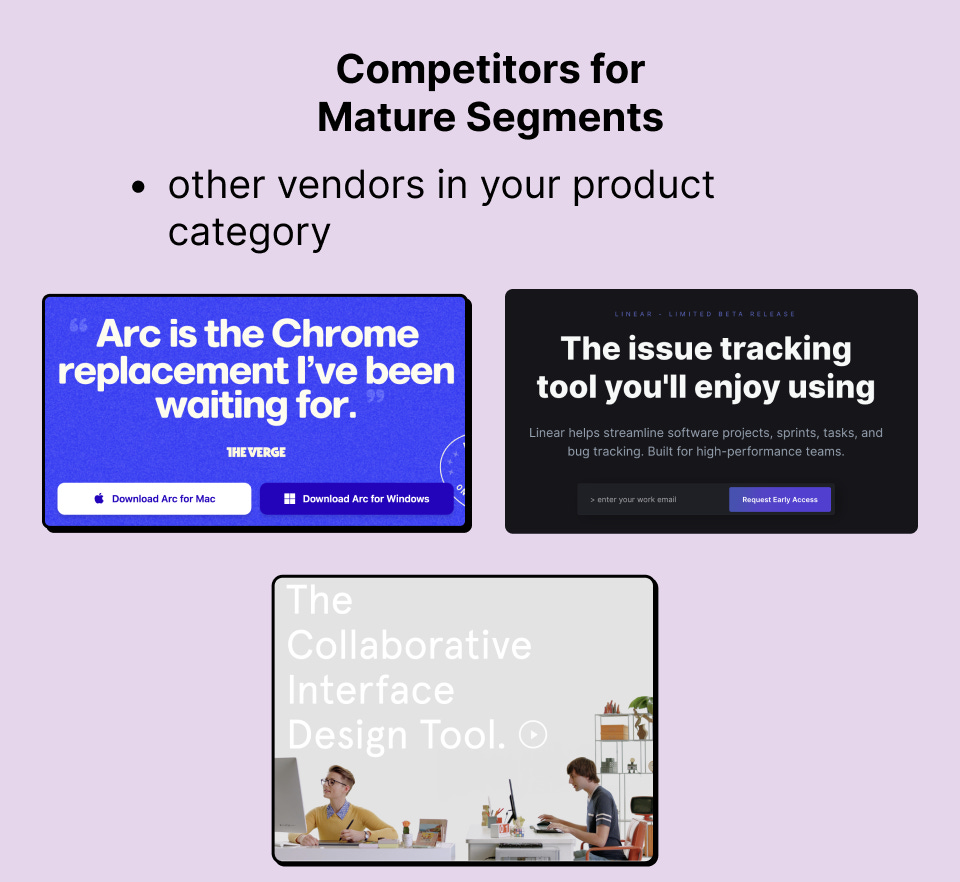How to differentiate your product
Part 2 of Anthony Pierri's definitive product positioning framework
👋 Hi, it’s Kyle and I’m back with a 🔥 edition of Growth Unhinged, my newsletter that explores the unexpected behind the fastest-growing startups.
As it gets easier to build software and AI products, it gets harder to differentiate them. Thankfully, Anthony Pierri of FletchPMM has helped 300 B2B startups better position their products to break through the noise. Now he’s sharing Fletch’s proprietary positioning framework (and positioning canvas) with the rest of us.
This is the 2nd and final part of the 6,500 word series. Don’t forget to catch up on part one — building your positioning strategy and choosing your target customer segment.
Your positioning strategy consists of two choices:
Who is your target customer segment?
What is your differentiation?
Having covered the first choice, we’ll now focus on choosing your differentiation.
Differentiation is essentially answering how you stand out and offer a different and better solution for a customer’s particular use case (or how you improve on a given product category).
Differentiation has four core elements:
a competitive alternative
the problem of the competitive alternative
how you do it differently (your product’s features and capabilities)
why that way is better (the benefits achieved through these features and capabilities)
Element #1: A competitive alternative
Your competitive alternative is what customers would use if you weren’t in the picture, and who (or what) that might be is driven by the maturity of your target segment.
If you are going after an immature market segment, then your competitive alternative is likely a process, an ill-equipped tool, or some combination of both.
For example, Slack focused on the target use case-based segment of those doing internal company communication. Their chosen competitive alternative? Email.
Loom positioned their product for the use case of “updating your team,” offering a better solution to replace the competitive alternative of “meetings.”
Basecamp didn’t focus on one enemy (like emails or meetings) as its competitive alternative, but chose a collection of processes: “Ditch the ineffective ‘stuff scattered everywhere’ approach.”
If you’re positioning within a mature market (i.e. in a known product category), your competitive alternative is other vendors in the same category.
Arc Browser launched in the mature category of “web browsers,” and positioned directly against Chrome, the market leading web browser.
Linear launched in the mature category of “issue tracking tools,” and positioned against other issue tracking tool vendors (most notably, Atlassian’s Jira).
Figma launched in the mature category of “interface design tools,” positioning against other vendors (such as Sketch and Adobe XD).
Element #2: The problem of the competitive alternative
Choosing your competitive alternative is more of an art than a science. However, the goal is very clear: you want to pick an enemy that is relevant and relatable to your target customers and that paints your product in the best possible light.
Let’s return to Slack for a moment. While they chose “email” as their initial competitive alternative, they could have just as easily chosen another internal communication tool to anchor against — papers memos perhaps, GChat, or even meetings.
However, email provided the most natural reference point and was a constant source of frustration for office workers (if you’ve ever been on a massive email thread with coworkers “replying all,” you know the feeling). This competitive alternative helped Slack’s features and capabilities (i.e. “channels,” “instant message style threads,” etc.) shine most acutely. If they had compared Slack to GChat, the standout features wouldn’t feel as unique or differentiated — and the market would have been exponentially smaller (since there were so many fewer users of GChat than email).
Element #3: How you do it differently
Keep reading with a 7-day free trial
Subscribe to Kyle Poyar’s Growth Unhinged to keep reading this post and get 7 days of free access to the full post archives.





